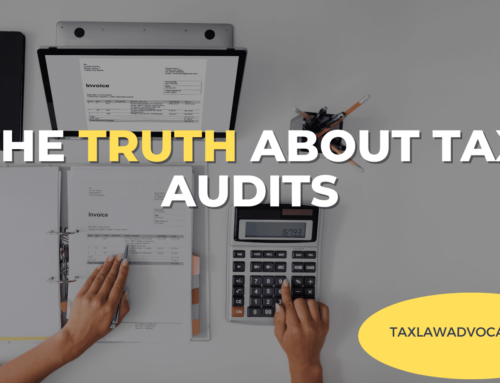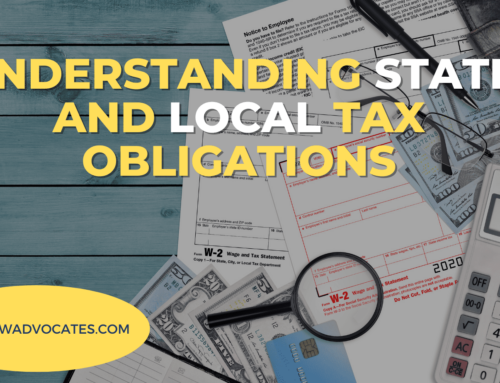
The gig economy is on the rise, and it’s important for you to understand what that means for your clients. In this blog post, we’ll discuss what the gig economy is, how it’s affecting businesses and individuals, and what you need to do to help your clients stay ahead of the curve and to best manage the gig economy as it continues to grow.
The gig economy is defined by short-term contracts or freelance work, as opposed to permanent jobs. The rise of the gig economy has been driven by a number of factors, including advances in technology, social distancing through the pandemic, and the desire for greater flexibility and autonomy among workers.
There are a few key things that businesses and individuals need to know about the gig economy. First, it’s important to understand how to classify workers in the gig economy. Are they employees or independent contractors? This distinction is important because it affects things like payroll taxes, benefits, and liability. Second, businesses need to know how to onboard freelancers and manage them as independent contractors. This includes understanding how to manage spending and compliance issues.
Don’t make the mistake of misclassifying your workers.
Whether you are a business owner or individual, if you find yourself with IRS tax debt, you may qualify for IRS Debt Forgiveness or the Fresh Start Program. Contact us to discuss your options.
Independent Contractor or an Employee?
As an advisor, it’s important to be up-to-date on the latest changes in the workforce – and that includes how businesses classify their workforce.
Business owners must correctly determine whether the individuals providing services are employees or independent contractors. Independent contractors are individuals who provide services to companies on a contract basis. They’re usually self-employed and are not considered employees of the company they’re working for.
It is required to withhold income taxes, social security taxes, and Medicare taxes as well as paying unemployment tax on wages paid to an employee. You usually don’t have to withhold or pay any taxes on payments to independent contractors.
The first step is understanding how to classify a worker. According to the IRS, “… determining whether the person providing service is an employee or an independent contractor, all information that provides evidence of the degree of control and independence must be considered.”
Common Law Rules
Facts that provide evidence of the degree of control and independence fall into three categories:
- Behavioral: Does the company control or have the right to control what the worker does and how the worker does his or her job?
- Financial: Are the business aspects of the worker’s job controlled by the payer? (these include things like how a worker is paid, whether expenses are reimbursed, who provides tools/supplies, etc.)
- Type of Relationship: Are there written contracts or employee type benefits (i.e. pension plan, insurance, vacation pay, etc.)? Will the relationship continue and is the work performed a key aspect of the business?
Behavioral
The company does not control the worker, nor does it have the right to control what the worker does or how he or she does his or her job. The worker is free to work when and where they want.
This is one of the key distinguishing factors between an employee and an independent contractor. With an employee, the company has a great deal of control over how the work is done. With an independent contractor, the company has very little to no control over how the work is done.
The other key distinguishing factor is economic: Does the company control or have the right to control the financial and/or economic aspects of the worker’s job?
Again, with an employee, the company has a great deal of control over the financial and economic aspects of the job. The company sets the salary, hour, benefits, etc. With an independent contractor, the worker has a great deal of control over his or her own financial and economic situation.
While clear freelance contracts are necessary, it is not enough for a contract to declare that the worker is an independent contractor. The IRS is not required to accept that a contract declares that the worker is an independent contractor, who must pay his or her own self-employment tax. To determine whether the worker is an employee or an independent contractor, look at how the parties work together.
Other behavioral factors the IRS considers are:
Degree of Instruction
The amount of control a company has over its workers when they are on the job is determined by the degree of instruction. Independent contractors decide when, where, and how to work. Employees are told the when, where, and how.
Does that mean that companies cannot offer instructions or guidance on getting the job done? No, but when working with a freelancer, the main focus should be on the end product or result. Freelancers should be allowed to perform the work in their own way and on their own time – as long as they meet deadlines.
Set up straightforward SOWs that clearly set out the deliverables and due dates.
Even if no instructions are given, sufficient behavioral control may exist if the employer has the right to control how the work results are achieved. The key consideration is whether the business has retained the right to control the details of a worker’s performance or has ceded that right.
Evaluation
If the details of how the work is performed are measured by an evaluation system, this indicates that an employee is performing the work. However, if the evaluation system only measures the end result, it can point to either an independent contractor or an employee.
Training
An employer-employee relationship exists when the business provides the worker with training on how to do the job. This shows that the business wants the job done in a specific way. If the company gives periodic or ongoing training about procedures and methods, that is even stronger evidence of an employer-employee relationship. Independent contractors, on the other hand, normally use their own methods.
Classifying Workers
If the above guidelines are not enough for your clients to be sure they are entering a contract with a freelancer, Form SS-8 can help. By filling out the form, you can get a good idea of the status of the worker.
If the Form SS-8, Determination of Worker Status for Purposes of Federal Employment Taxes and Income Tax Withholding PDF can’t provide a clear answer to the question of whether a worker is an employee or an independent contractor, then the business or worker may submit it to the IRS. The IRS will review the circumstances and decide whether the worker is an employee or an independent contractor.
Once a freelancer is classified by whatever means your client uses, they need to onboard them as an independent worker. This means ensuring that they have the appropriate documentation in place, such as a contract or freelancer agreement. It’s also important to manage spending and compliance issues when working with freelancers.
Here are a few tips for staying compliant when working with freelancers:
- Ensure that you get a signed 1099 from your freelancer
- Make sure you have a contract in place that outlines the scope of work and compensation.
- Keep track of expenses and ensure that all payments are made on time.
The consequences of misclassification can be grave. Besides owing back taxes to the feds, the business will also owe state unemployment taxes and unpaid worker’s compensation premiums, and may owe unpaid overtime or minimum wages, medical expenses and unpaid vacation and sick pay.
While strictly not necessary, your clients might also consider hiring freelancers who have other clients. If the freelancer works for multiple companies, that can be considered evidence that they are, in fact, an independent contractor.
Your clients should consider separate platforms for managing employees and independent contractors. This extra degree of separation can work in their favor if the IRS decides to take a closer look.
If you have clients who are using freelance or gig workers, it’s important to advise them on the proper classification, onboarding, and spending management. As an advisor, you play a vital role in helping your clients navigate the ever-changing world of the gig economy.
Misclassification
If your client does misclassify an employee as a freelancer, the IRS has relief provisions in place.
If they had a reasonable basis for not treating a worker as an employee, they may be relieved from having to pay employment taxes for that worker. To get this relief, you must file all required federal information returns on a basis consistent with your treatment of the worker.
The Voluntary Classification Settlement Program (VCSP) allows certain taxpayers to reclassify their employees as employees for future tax periods with partial employment tax relief. Applications for VCSP can be made by filing Form 8952, Application for Voluntary Classification Settlement Program. The IRS will enter into a closing agreement with you following your application.
Rogue Spending
Outsourcing staffing work to third-party providers, in violation of pre-negotiated contracts or contingent workforce program guidelines, is known as rogue spend. The expanded definition refers to the lack of visibility from line of business executives seeking talent (1099 workers, freelancers) directly through PayPal, credit cards, or Accounts Payable.
Managing an expanded workforce requires a distinct change in management techniques to guide a team to the completion of their project effectively. Online freelance marketplaces, which make it simple to acquire a large workforce, have made procuring a group of 1099 workers as simple as a Google search, enabling many business units to work around HR restrictions, and committing to rogue spend.
Rogue spend is not typically committed out of malicious intent, but rather a desire for stakeholders to obtain the proper tools to meet their critical demands. A Freelance Management System that efficiently handles the onboarding, assignment, and payment processes for an extended workforce (gig workers, independent contractors, etc.) may effectively assist organizations gain visibility into their rogue spend and use it to their advantage.
As an advisor, you play a vital role in helping your clients navigate the ever-changing world of the gig economy. By advising them on the proper classification of workers, and on how to manage rogue spend, you can help them avoid costly mistakes and run their businesses more effectively.





